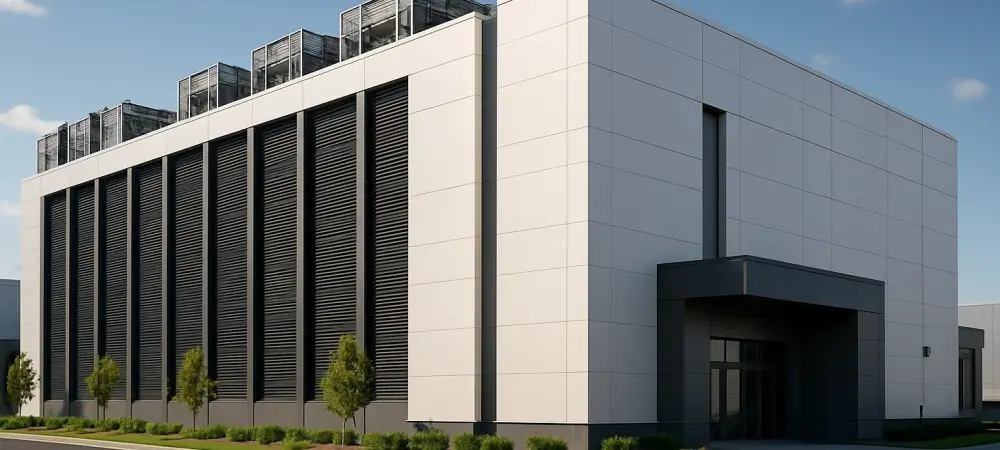What happens when a nation’s digital appetite outpaces its infrastructure, and a titan steps in to bridge the gap with a groundbreaking solution? India, with its explosive growth in AI and cloud computing, faces a data center crunch that could define its tech trajectory for decades to come. Enter Tata Group, a conglomerate with roots deep in India’s industrial history, now launching HyperVault AI Data Center Limited to build a staggering 1GW of data center capacity. This isn’t just about servers and storage—it’s about powering the next era of innovation in one of the world’s most dynamic markets.
The significance of this move cannot be overstated. With current live data center capacity at a mere 1.2GW—barely 14% of the total 8.9GW supply in development—India is at a critical juncture. Tata’s bold play through HyperVault, a subsidiary of Tata Consultancy Services (TCS), targets the heart of this demand, focusing on sovereign AI data centers for local enterprises, government bodies, and cutting-edge tech firms. This initiative promises to reshape how India handles data security, digital growth, and global competitiveness.
Why Tata Is Doubling Down on AI Data Centers
India’s digital landscape is a pressure cooker of opportunity, with businesses, startups, and government entities racing to adopt AI and cloud solutions. Tata Group recognizes that data centers are the backbone of this transformation, essential for everything from machine learning algorithms to secure public sector databases. HyperVault’s launch signals a strategic pivot to meet these needs head-on, positioning Tata as a leader in a sector poised for exponential growth.
Beyond mere infrastructure, this venture reflects a deeper commitment to national priorities. By focusing on India-based clients rather than global markets, Tata is addressing concerns around data sovereignty and regulatory compliance, issues that resonate strongly with policymakers and local industries. The scale of the 1GW build-out underscores a vision to not just keep up with demand, but to anticipate and shape the future of tech in the region.
Unpacking the Data Center Surge in India
The numbers tell a compelling story of urgency and potential. Industry analyses from firms like DC Byte and JLL forecast a 66% surge in data center capacity by 2027, driven by rampant digitalization across sectors. Urban hubs such as Mumbai, Hyderabad, and Bangalore already dominate the existing infrastructure, yet the gap between supply and demand continues to widen as more businesses migrate to cloud-based systems.
Global hyperscalers are also staking their claim, amplifying the stakes. Microsoft’s plans for a new cloud region in Hyderabad by 2027 and Google’s $15 billion investment in Andhra Pradesh highlight the international spotlight on India. Tata’s entry with HyperVault isn’t just timely—it’s a calculated move to ensure that domestic players have a robust, locally tailored alternative to foreign giants, fostering a balanced ecosystem.
Inside HyperVault’s Massive 1GW Blueprint
HyperVault AI Data Center Limited, backed by TCS, is rolling out an ambitious plan that could redefine India’s tech infrastructure. The project, with an estimated cost of $1 billion per 150MW, translates to a staggering $6.6 billion for the full 1GW capacity. Spanning a timeline of five to seven years, the rollout is designed with flexibility to accelerate if market demand spikes, showcasing a blend of long-term vision and pragmatic adaptability.
What sets this initiative apart is its sharp focus on local needs. HyperVault prioritizes colocation services for AI providers, deep-tech innovators, and government entities, ensuring that data remains within India’s borders to meet stringent security and compliance standards. A dedicated management team, separate from TCS’s broader operations, has been tasked with steering this venture, as noted by TCS CEO K. Krithivasan, emphasizing the specialized attention this project demands.
Expert Perspectives and Market Momentum
Industry leaders and analysts are buzzing with optimism about Tata’s latest move. Sam Altman, CEO of OpenAI, recently pointed to India as the company’s second-largest market by user base, a testament to the country’s rapid embrace of AI technologies. This trend aligns with projections from DC Byte and JLL, which highlight India’s trajectory toward becoming a global data center powerhouse, fueled by both domestic growth and international investments.
Tata’s credibility in this space adds further weight to HyperVault’s prospects. With a legacy of operating 22 data centers worldwide through Tata Communications—despite past divestitures like the 2017 deal with STT Telemedia’s STT GDC—the group brings proven expertise to the table. This combination of market readiness and historical know-how positions HyperVault as a venture to watch, with potential ripple effects across the tech sector.
Opportunities for Collaboration and Growth
HyperVault’s launch opens a wealth of possibilities for businesses and policymakers eager to tap into next-generation data infrastructure. For AI startups and deep-tech companies, partnering with HyperVault could mean access to secure, high-capacity facilities tailored to their unique requirements, fostering innovation without the burden of building their own systems from scratch.
Government agencies stand to gain as well, particularly in aligning with data sovereignty mandates through HyperVault’s domestic focus. Meanwhile, enterprises planning digital overhauls can sync their strategies with the phased rollout, ensuring they’re ready to scale as new capacity comes online. The adaptability of Tata’s timeline also invites stakeholders to advocate for faster deployments in high-demand regions, creating a dialogue between market needs and infrastructure growth.
Looking back, Tata Group’s decision to establish HyperVault AI Data Center Limited marked a defining moment in India’s journey toward digital prominence. The audacious 1GW build-out, underpinned by significant investment and a laser focus on local demand, laid the groundwork for a stronger, more secure tech ecosystem. As the nation continued to attract global attention, the challenge remained clear: stakeholders needed to actively engage with such initiatives, forging partnerships and shaping policies that would sustain this momentum. The path ahead demanded collaboration, innovation, and a shared commitment to turning India’s digital potential into lasting impact.

